
Ron Hicklin & John Bahler

The Monkees
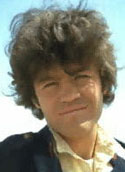
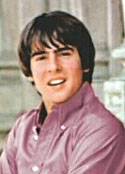
Micky Dolenz and Davy Jones
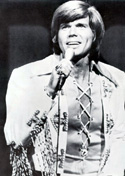
John Davidson

Dolly soundtrack
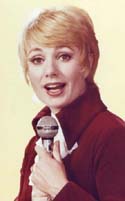
Shirley Jones joins the party
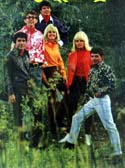
Let The Good Times In: Love Generation Version
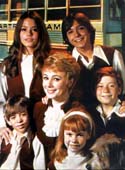
Let The Good Times In: Partridge Version
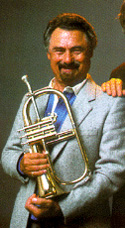
Shorty Rogers

GH: How did you get involved with The Monkees?
TB: That was through Ron Hicklin. My brother met Ron as soon as he got to L.A. John started interfacing with other singers at the time. My brother was so amazingly talented that he took the city by storm. He had the old school understanding. Both of us did because of our father and because we had always studied music, but we also understood rock & roll, which a lot of the old guard didnít. In fact, they hated it Ė just like the singers now hate rap. But thatís what was selling.
GH:† Ron Hicklin brought you two in to record with them?
TB: No, I wasnít involved at first, John was. Ron was already established in town and he was the one responsible for getting the voices for The Monkees.
GH: He was responsible for hiring the four Monkees?
TB: No, he was responsible for hiring the voices that would shadow them.
GH: Were the four Monkees hired to actually sing on their own records?
TB: Yes, they were, but I believe Micky Dolenz was the only one that they actually used on the first album. And Micky did have a good voice.
GH: Why didnít the others sing on that first album?
TB: Because I think it probably didnít sound very good. The funny thing is, I did an album with Davy Jones after that and he was really very good! You see, a lot of singers werenít very good when they were younger. If you listen to the early Beatles, they didnít sing very well either, but they grew with their success. Some of their early songs were out of their league. Frank Sinatra was never a trained singer either, but the longer you sing the better you get. Paul McCartney sings his butt off now, man Ė but he didnít when he was 20. So they would hire us to come in and either fix parts, replace parts, replace parts of parts, or sing along with them.
GH: Did you record with them or separately?
TB: No, it was never with them. The only person I ever sang with in the studio was John Davidson. I used to sing in his ear. They were trying to make a pop artist out of him, and he wasnít one. His voice is more geared for the Broadway stage.
GH: Is this is how you got involved with Screen Gems?
TB: Yeah, they produced The Monkeesí TV series.†
GH: Had you worked with Jackie Ward prior to this?
TB: No, I met her when I first started doing studio work. I think my first studio job was for the movie, ďHello Dolly!Ē with Barbra Streisand. I felt great. Most of the tenors must have been out of town that week, because here I am, just out of college and I had done a season with the Smothers Brothers. Then I get a call that they were casting 10 tenor voices for the film and I was one of the 10 chosen. That just blew me away. Thatís another example of one of those jobs where you just meet other singers. I think people took notice of John and me because we were pretty darn good singers, but we were also excellent instrumentalists and thatís not always the case. Singers donít necessarily read as well as instrumentalists. Plus, we both have absolute pitch.
GH: How did you get the call to come in for The Partridge Family?
TB: Ron Hicklin got the call to work on The Monkees, and he got the call to work on The Partridge Family, too. We went in to do the group. They wanted a young sound and we were some of the youngest around. In the beginning, there were five of us then: Ron and Jackie, my brother John, me, and Stan Farber. Stan and I sang lead. This was before David was even cast.†
GH: Why isnít Stan Farber credited on any of the albums?
TB: I donít know if anything he did ever ended up on an album. I donít know that it didnít, though, either. My memory on these things isnít always real clear because at the time it was just another gig [Ed. note: To see which songs Stan Farber recorded, check out our Recording Sessions page!]. I remember feeling really bad for Stan, because they [Screen Gems] only wanted four singers, not five. They were either going to drop Stan or drop me. I had only been in the business a short while, but even though I had a lot of credits, in the pecking order I was the one with the least amount of experience. So, if someone was going to get cut it was going to be me. The difference was I had a more to offer than Stan in terms of musical ability and range ability and things of that nature, so they decided to let Stan go and keep me. And while I was thrilled to have a job, my heart was broken for Stan.
GH: Did these types of jobs pay well?
TB: They paid very well, but we always worked for scale. We didnít go in and hire ourselves out for any grand fee. What we did do, though, with The Partridge Family, is charged more than we ever charged anybody else as a group. I think we charged something like triple scale, which at the time was unheard of.
GH:† Why did you do that?
TB: Because we felt we deserved it, if were going to be a group and not be getting royalties.
GH: You didnít get any royalties?
TB: Uh-uh.
GH: You went in and recorded these songs for a flat fee?
TB: Yes, plus we got residuals from reruns at first.† We were happy with that because The Partridge Family got us a lot more work. When youíre not a contract player, you're a freelance artist that can get contracted out to do other things. We couldnít have done that if we were contracted. We didnít want to be contracted, although we probably wouldnít have turned it down. Originally, when they first came to us Ė before they knew David Cassidy could sing Ė we were going to be royalty artists. We were going to be The Partridge Family.
GH: Were there plans all along to release singles as The Partridge Family, even before David began to sing?
TB: Oh yeah! There was a record deal.
GH: Were you hired on for a series of records or was this a one-shot deal?
TB:† When we went in and did the pilot, it was all conjecture. If they didnít sell the series, there wasnít going to be anything. We were hired for the pilot and they told us the theme of the show and said it was similar to the Cowsills. We even knew one of the Cowsills at the time Ė I forget which one. So we knew exactly what they wanted and exactly what to do.
GH: When you were first brought in, was Shirley Jones already a part of the pilot?
TB: I think Shirley was there, but she didnít sing with us. Jackie Ward sung the female part on ďLet the Good Times In.Ē When Shirley came in, she did her parts separately from us. To tell you the truth, I donít remember much about doing the pilot.
GH: You only recorded ďLet the Good Times InĒ,† ďTogetherĒ, and one other song that was eventually discarded, so your time was limited on the pilot.
TB: Thatís right.
GH: Did you re-record ďLet The Good Times InĒ for the pilot, or did you use the Love Generationís version?
TB: No, we re-recorded it. We couldnít use the Love Generation stuff because the other voices were in place.† But originally the deal was that we were going to get royalties. And we said, ďThatís cool!Ē Because if we were going to be the group, then thatís the way it should be. But that was before David. When David and Wes Farrell came in, things changed.
GH: Before any of that happened, Shorty Rogers was in place as musical director. He is credited as providing the music for the first season. Can you shed some light on what happened?
TB: I remember Shorty being very involved in the beginning, but when Wes Farrell came in and sold himself as a producer, Shorty went away. Shorty worked with us on the pilotís music and even co-wrote ďTogetherĒ. He was a sweet, sweet man, but he was not experienced at producing hit records. He was a jazz musician - the Newport Jazz Festival sort of stuff - and a flugelhorn player. We used to say that Shorty spoke in quarter-triplets because his speech was so drawn out and slow. But he was as sincere as he could be.
GH: It seems strange that a jazz musician was brought in to work on this series.
TB:† I think he doing other TV shows at the time.